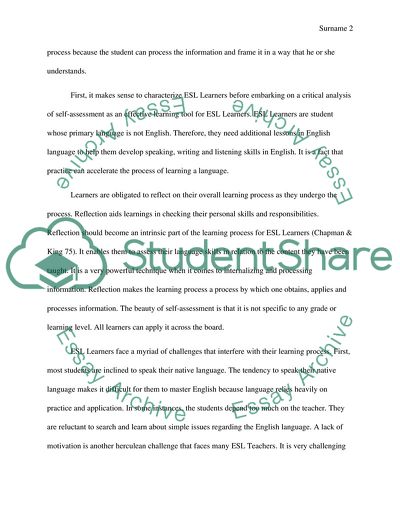Cite this document
(Self-Assessment and ESL Learners Assignment Example | Topics and Well Written Essays - 1500 words, n.d.)
Self-Assessment and ESL Learners Assignment Example | Topics and Well Written Essays - 1500 words. https://studentshare.org/education/1849834-self-assessment-as-a-tool-to-improve-esl-learners-performance
Self-Assessment and ESL Learners Assignment Example | Topics and Well Written Essays - 1500 words. https://studentshare.org/education/1849834-self-assessment-as-a-tool-to-improve-esl-learners-performance
(Self-Assessment and ESL Learners Assignment Example | Topics and Well Written Essays - 1500 Words)
Self-Assessment and ESL Learners Assignment Example | Topics and Well Written Essays - 1500 Words. https://studentshare.org/education/1849834-self-assessment-as-a-tool-to-improve-esl-learners-performance.
Self-Assessment and ESL Learners Assignment Example | Topics and Well Written Essays - 1500 Words. https://studentshare.org/education/1849834-self-assessment-as-a-tool-to-improve-esl-learners-performance.
“Self-Assessment and ESL Learners Assignment Example | Topics and Well Written Essays - 1500 Words”. https://studentshare.org/education/1849834-self-assessment-as-a-tool-to-improve-esl-learners-performance.


